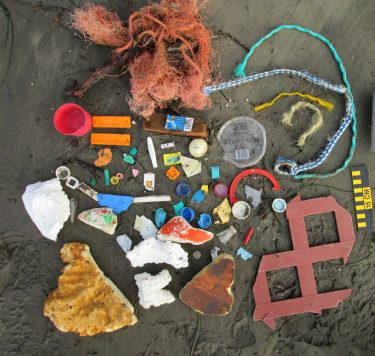
Citizen scientists recorded trash on Pacific Northwest beaches, from southern Oregon to Anacortes, Washington, to contribute to the growing study of marine trash. A study by the University of Washington analyzed 843 beach surveys and found that certain beaches, and certain areas of a single beach, are “sticky zones” that accumulate litter.
The study was published online Aug. 11 in Marine Pollution Bulletin.
“Thousands of volunteer hours allowed us to investigate what is driving the rubbish washing up on our beaches, and where it’s ending up,” said lead author Kathy Willis, a UW visiting scientist who is a postdoctoral researcher at the Commonwealth Scientific and Industrial Research Organization, or CSIRO, in Australia. “Understanding how trash moves through the marine environment provides us with important clues to identify sources and implement strategies to prevent more trash escaping.”
“In populated areas of Puget Sound, what the data suggest is that if you see a lot of trash, someone probably dumped it or it escaped accidentally nearby,” said co-author Jackie Lindsey, Science Coordinator at COASST. “But if there’s a lot of trash in a remote region, the people who live there are not necessarily the people who are creating that trash — they’re just the ones who are dealing with it once it lands.”
All the data were collected by volunteers with the Coastal Observation and Seabird Survey Team, or COASST. The UW-based citizen science effort began in the 1990s to study seabirds. In late 2015 the team added a group of volunteers focused on observing marine litter.
Read more at UW News »
